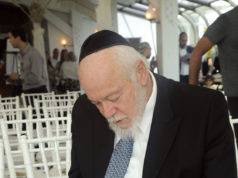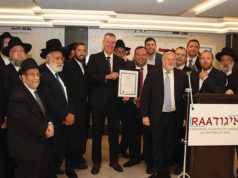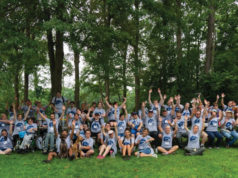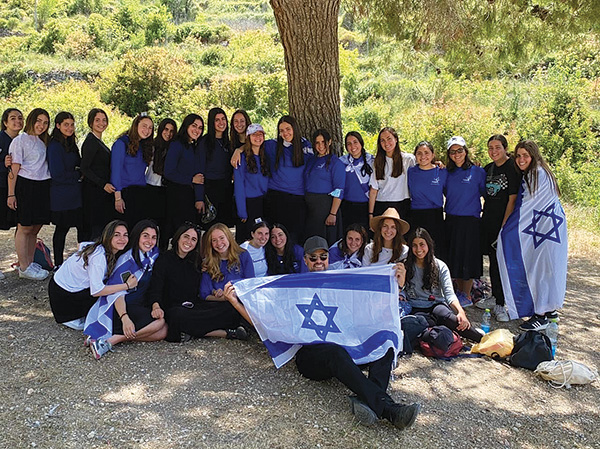
As the difficult time of COVID-19 continued to limit travel, many seminaries and yeshivahs were unsure what to do for Pesach. Lucky for me, Midreshet Eshel, my home since September, decided to create their own Pesach program for all the girls, and it was an incredible and eye opening experience.
We were taken on an overnight trip to Mitzpe Ramon which was packed with fun activities. Our group was treated to the most beautiful views of giant craters, with the knowledge of thousands of years of history behind them. At night we went skygazing in the middle of the desert and it was absolutely beautiful to see millions of stars covering the sky.
After this overnight, we were able to visit Kever Rachel and Maarat Hamachpela and actually entered our Patriarch Yitshak Avinu’s tomb which is closed during the year. Margo Goldstein recalled the trip as, “a very spiritual experience being in the same place where the greatest people of Tanach are buried. At each grave, we prayed meaningfully and felt very connected to our heritage.”
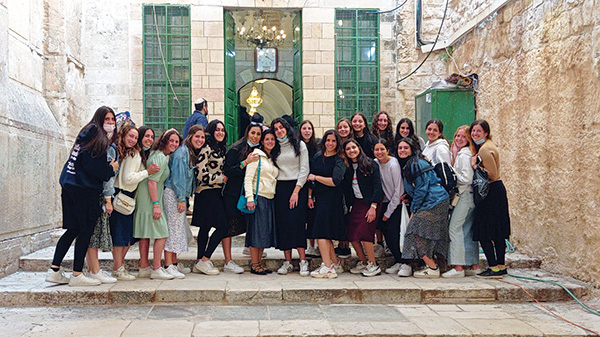
We also visited the city of Shiloh, where the tabernacle stood for 369 years. The girls sang Hallel together among the remnants of the tabernacle, as well as where Chanah prayed silently to have a son.
Our amazing tour guide used the Tanakh as the basis of his explanations and made the text come to life in such an awe-inspiring way. Paula Guindi said, “We got to visit a replica of the Mishkan which is now a functioning shul. We also stopped at many sites along the way, including the rocks where Yaakov Avinu had his dream of the ladder and angels ascending and descending in Beit-El.” A few more trips helped us strengthen the connection to our beautiful, inspiring, and historical land, Eretz Israel.
After all the trips, we had the most unique and interactive Seder I’ve ever been a part of. Audrey Sutton wrote the following detailed summary of what our Pesach Seder looked like: a Seder in the heart of the holy city of Jerusalem, minutes away from the Kotel—and future Beit Hamikdash—what could be better than that? Our very own Midrasha classroom was covered in blue drapes decorated with seashells and bright blue pearls hanging from the ceiling to create an under the sea theme. A huge Moroccan carpet covered the floor along with many mattresses where we sat during the Seder. Everyone wore blue to match the under sea theme and prepared ourselves to run and greet Moshiach and Eliahu Hanavi by the Beit Hamikdash.
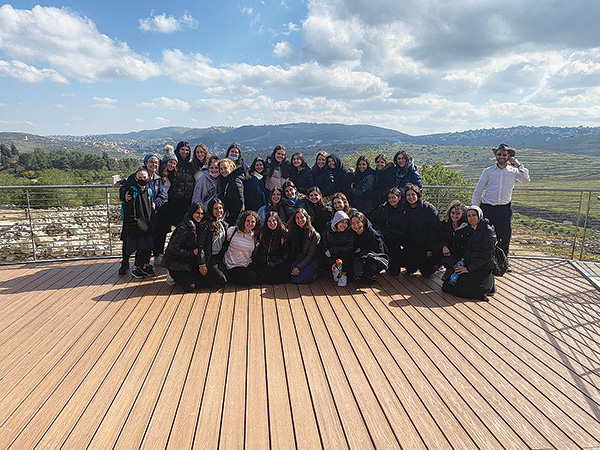
Before the Seder even began, we all shared our own “Egypts” that we wanted to escape from this year. This included anything we struggled with or were bothered by that we didn’t want to take along with us in the future. After sharing, we all walked out onto the terrace through two rows of tables decorated to look like the split sea, and imagined ourselves leaving behind all of those issues. When we walked back into the classroom, our teacher Nili who joined us for the Seder, surprised us with costumes all related to the story of Pesach and the 10 plagues. The group dressed up and truly felt as if we were living the story of Pesach.
When the Seder began, each of us chose one part of the Haggadah to tell a Dvar Torah on. This really helped us connect to the Seder and understand the text in ways we never did before.
Because all of us come from different backgrounds and have different customs and tunes from our families back at home, we had the ability to bring them all together and enjoy a unique and international Seder. We took the Syrian custom of saying “Misharotam,” and holding the bag of matzah over our shoulder, a Morrocan custom of swinging the Passover platter around our heads, and a Persian custom of hitting each other with scallions during Dayenu.These customs really helped keep us engaged in the Seder, and made us feel as if we were home.
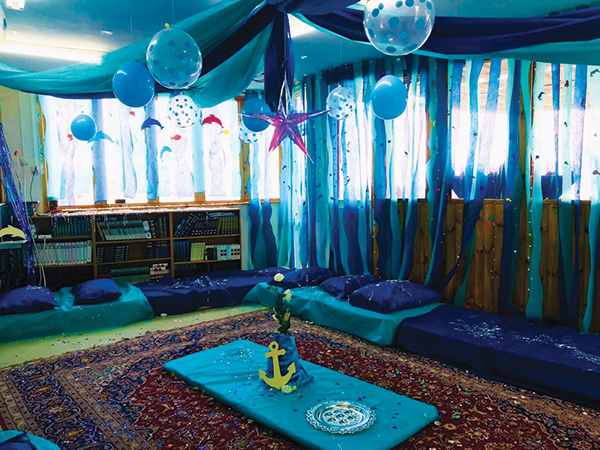
As we read about the plagues, Nilli (who brought all different props with her) brought them to life. We had red slime to imitate the blood that took over Egypt. Little pieces of heart confetti thrown into our hair for lice, and so on for each of the plagues. When the time came to finally have our first piece of matzah, we took a few minutes of silence to really take in the moment. As we ate the matzah, we pictured ourselves being freed from everything we struggled with. Sitting there, just simply eating matzah, was a powerful experience.
After our meal, we went on a scavenger hunt around the school looking for the afikoman. Then it was time to welcome Eliyahu Hanavi. We all lit candles and walked around the entire Jewish portion of the Old City, singing songs about Eliyahu to give him a nice and proper welcome. If our candles went out, our friends would relight them for us. That was a deep and powerful lesson we were able to take for life. We, as Am Yisrael, will always be there to help each other and spread our light in times of need.

We got back to the classroom, sang songs and had some classes about the Red Sea, and before we knew it, there were two hours till sunrise. A group of us sang and danced around the classroom keeping ourselves awake and having a great time until sunrise when we walked down to the Kotel and prayed.
This was a Pesach experience like no other; one I will always cherish. I intend to bring the lessons, customs, and ideas I have learned and experienced Beezrat Hashem to my own home in the future.

